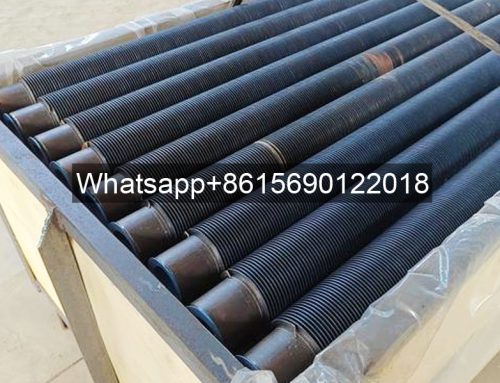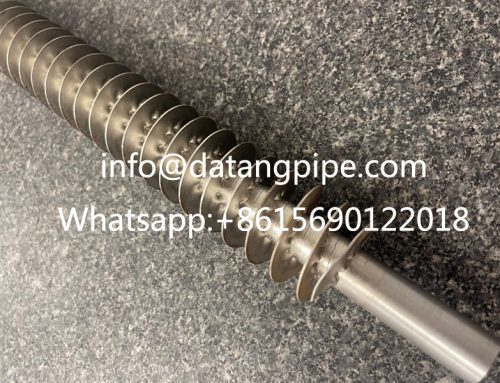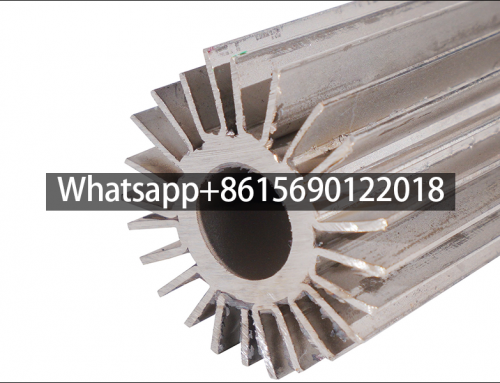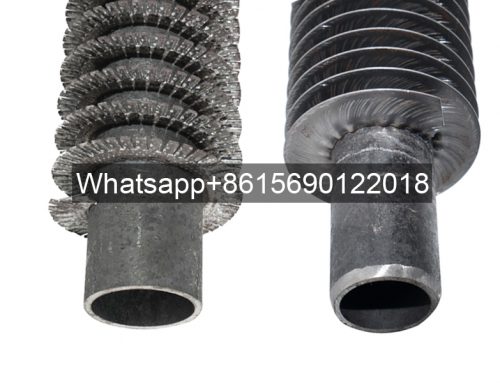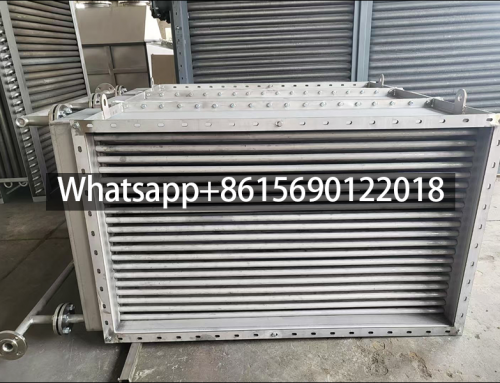How to Improve The Heat Dissipation Efficiency of High Frequency Welded Fin Tubes?
What is a high-frequency welded fin tube?
High-frequency welded fin tube is a fin tube made by high-frequency current welding technology, which is mainly used to improve heat exchange efficiency. High-frequency welded fin tubes heat the outer surface of the steel strip and steel tube through the skin effect and proximity effect of high-frequency current, and then complete the welding under a certain pressure, so that the base tube and the fin are basically integrated.

Structure and working principle of high-frequency welded fin tube
High-frequency welded fin tubes consist of a base tube and fins. The base tube is usually a steel tube or a copper tube, and the fins are attached to the base tube by high-frequency welding technology. High-frequency welding technology uses high-frequency current to generate heat on the metal surface, so that the outer surface of the steel strip and steel tube is heated to a plastic state or melted, and then the welding is completed during the winding or pressing process to ensure that the fins are tightly connected to the base tube.
Application field of high-frequency welded fin tubes
High-frequency welded fin tubes are widely used in many industrial fields, including HVAC, energy and power, and chemical petroleum. In the field of HVAC, high-frequency welded finned tubes are used in air-conditioning condensers and evaporators to enhance air-side heat exchange; in the field of energy and power, they are used in boiler economizers and air preheaters to deal with high-temperature flue gas heat exchange; in the field of chemical and petroleum, they are used to handle highly corrosive or high-fluids.
Advantages and Disadvantages of High-frequency Welded Finned Tubes
The advantages of high-frequency welded finned tubes include:
Efficient heat exchange :
The fins greatly increase the heat exchange area and significantly improve the heat transfer efficiency.
Compact design :
Achieve high heat exchange capacity in a limited space and save equipment volume.
Wide applicability :
Applicable to a variety of industrial fields, especially in situations where efficient heat exchange is required.
Disadvantages of high-frequency welded finned tubes include:
High cost :
High-frequency welding technology requires professional equipment and operators, resulting in high manufacturing costs.
Complex maintenance :
Due to the complex structure, maintenance and overhaul are relatively difficult .
To improve the heat dissipation efficiency of high frequency welded fin tubes, you can optimize the fin structure, select high thermal conductivity materials, improve fluid flow, regularly clean and maintain, and strengthen environmental heat exchange – five major strategies to comprehensively improve the heat dissipation efficiency and make heat have nowhere to hide.

1. Optimize the fin structure design
Increase the fin density: appropriately increase the number of fins within a reasonable range and reduce the spacing between the fins. This can increase the overall heat dissipation surface area and allow more “dissipation channels” for heat, thereby more fully exchanging heat with the external medium and improving the heat dissipation efficiency. However, it is important to avoid too small spacing to affect the smoothness of the flow of media such as air.
Improve the fin shape: For example, use corrugated, serrated and other special-shaped fins to replace traditional straight fins. These special-shaped fins can destroy the stability of the thermal boundary layer, enhance the disturbance of the fluid, accelerate heat transfer, and help improve heat dissipation performance.
2. Choose the right material
High thermal conductivity material: It is preferred to use materials with good thermal conductivity as the base tube and fin material. For example, copper has a high thermal conductivity. If the working conditions allow and the cost is controllable, the use of copper high-frequency welded fin tubes can speed up the heat conduction speed in the tube and on the fins, thereby improving the overall heat dissipation effect. Even for steel, you can choose high-quality alloy steel and other types with relatively better thermal conductivity.
Consider surface characteristic materials: Select materials with appropriate surface roughness, or process the fin surface (such as grinding, coating, etc.) to change its surface characteristics, enhance the convective heat transfer effect, and facilitate heat dissipation to the surrounding environment.
3. Improve fluid flow state
Increase flow rate: Within the allowable working conditions and equipment pressure tolerance range, appropriately increase the flow rate of the heat medium (such as hot water, steam, etc.) flowing through the fin tube, so that the heat medium can transfer heat to the fin faster, and also enhance the heat exchange with the inner wall of the fin tube. For the cooling medium outside the tube (such as air), its flow rate can also be increased by adding ventilation equipment.
Optimize flow design: Rationally design the flow direction of heat medium and cooling medium, such as adopting countercurrent arrangement, which can maintain a larger average temperature difference between hot and cold fluids compared to downstream, which is more conducive to heat transfer and enhances heat dissipation performance.

4. Do a good job of surface cleaning and maintenance
Regular cleaning: Regularly remove dust, oil, scale and other impurities on the surface of the fin tube to prevent the accumulation of these dirt from affecting heat transfer, ensure that the heat exchange between the fin and the external medium is not hindered, and always maintain a good heat dissipation state.
Anti-corrosion treatment: Take anti-corrosion measures for the fin tube to prevent surface damage and thinning due to corrosion, which will affect the thermal conductivity and overall structural integrity, and ensure long-term stable heat dissipation performance.
5. Strengthen heat exchange with the external environment
Enhance ventilation conditions: If it is in an application scenario where air heat dissipation is used, improve the ventilation conditions of the installation environment, such as adding vents, installing exhaust fans, etc., to ensure that there is sufficient and fresh cold air to take away the heat emitted by the fin tube in time, and maintain a large temperature difference to promote continuous heat dissipation.
Utilize phase change materials to assist: In some specific scenarios, phase change materials can be used in combination to utilize the phase change characteristics of phase change materials when absorbing heat to enhance the overall heat storage and release capabilities, and collaborate with fin tubes to further improve the heat dissipation effect.


